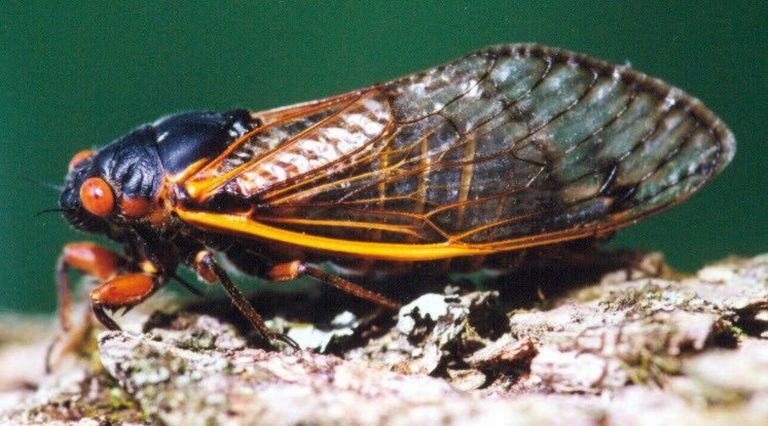International scientists check Chilo cicadas

CHILO – Cicadas generally make their presence known – loudly – in the spring and summer.
Yet scientists visited Chilo Lock 34 Park in early November searching for answers to a long-standing question: How do the insects know when their 13- or 17-year dormant period is over so they should start tunneling to the surface?
Cicada expert Dr. Gene Kritsky from Cincinnati’s Mount St. Joseph University and Dr. Teiji Sota from Kyoto University in Japan brought a team of scientists to dig for nymphs – the immature cicadas burrowed near tree roots – that may offer a clue.
“We are going track the growth pattern of the nymphs,” Sota said. “We want know the mechanism of how they count the number years.
“Our hypothesis is that they use their body weight as a cue for the timing of their metamorphosis.”
The scientists found, photographed and weighed dozens of nymphs from several different broods on the park grounds. They will return to Chilo – and several other sites in the region – each of the next few autumns to compare the size and weight of the nymphs over time.
Brood X – a 17-year cicada – is expected to make its next appearance in 2021.
“Cicadas are universal and there’s only a few of us in the world who love cicadas as much as Teiji and I do,” Kritsky said. “We’re fortunate that his lab has got this interest in this great hypothesis to help us zero in on this question that we’ve been asking for centuries.”
Why Chilo? Kritsky – who has authored several books on cicadas and serves as the Dean of Behavioral and Natural Sciences at The Mount – has a history of cicada research at the park dating back to the early part of this century.
“It’s exciting to have these internationally known experts on our site,” said Park District Community Relations Manager Mark D. Motz. “Most of us might think about cicadas once or twice every couple of decades when they appear.
“Dr. Kritsky – on the other hand – has made a career of them. What he, Dr. Sota and their team find in Chilo over the next couple of years may have ramifications across the globe.
“It’s pretty cool to be on the front line of that kind of research, even in a small capacity. We’re happy we could be of service to the scientific community.”

